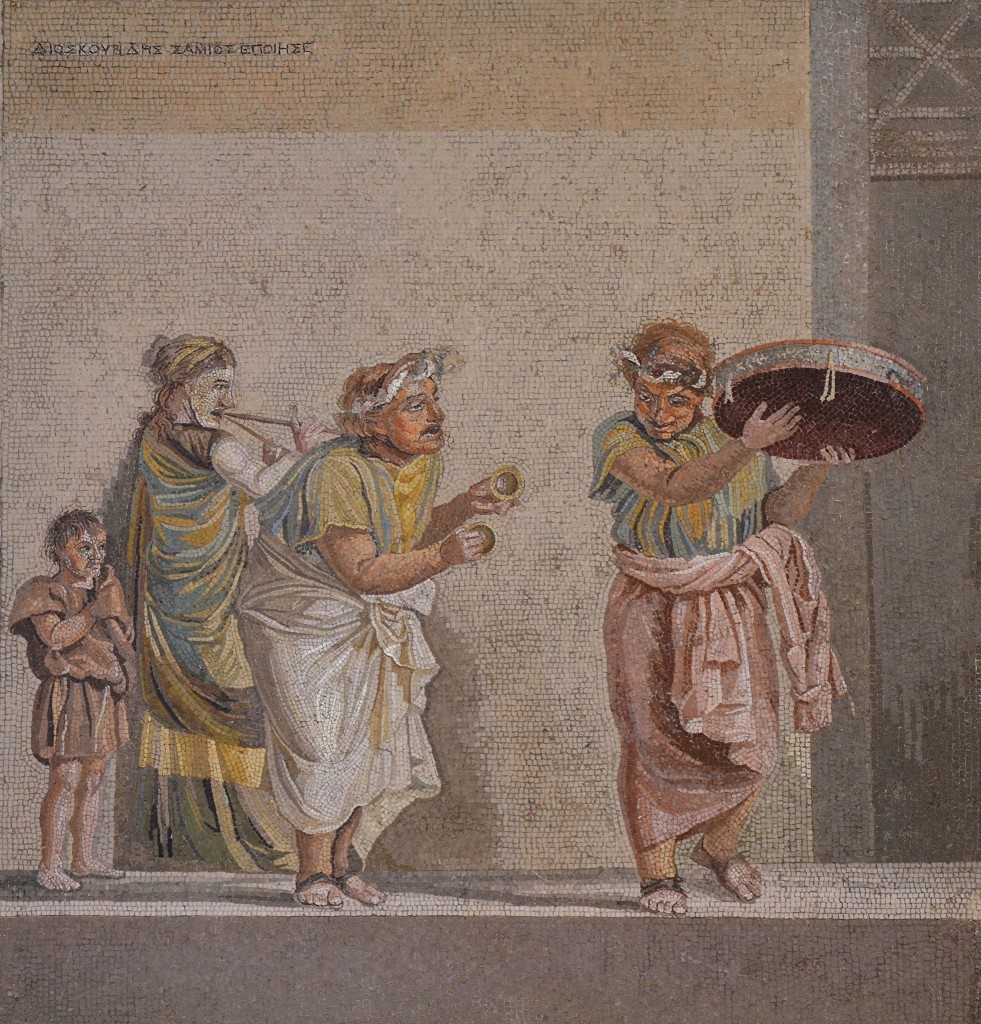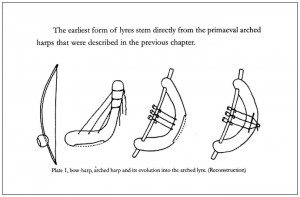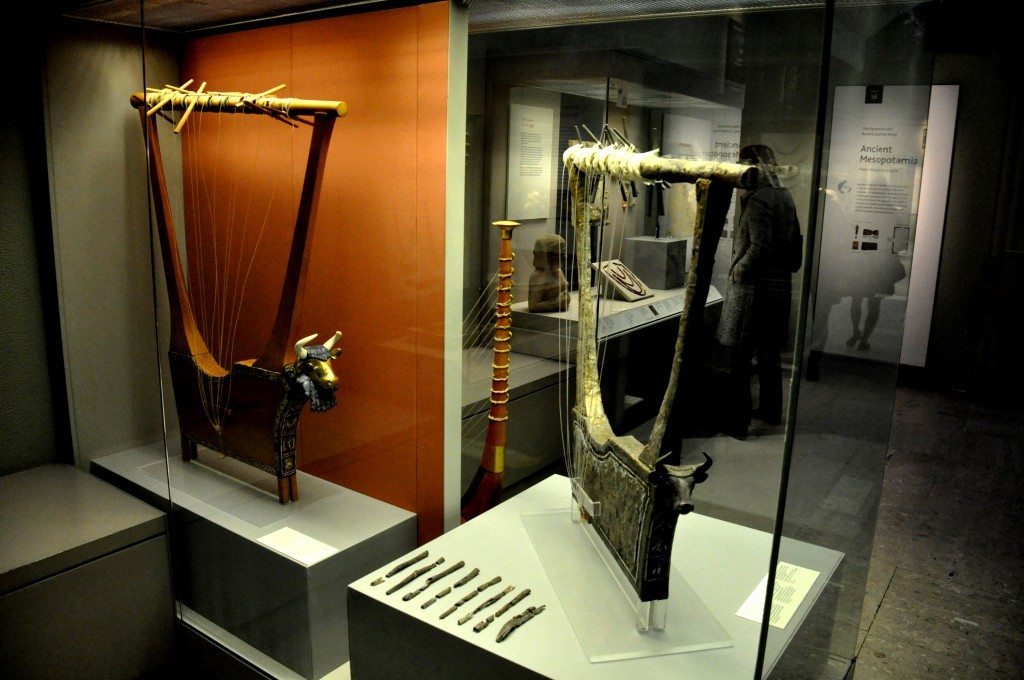Music had always been an important part of life for many ancient cultures. It weaves its way into ritual and entertainment. Let’s explore ancient music of the Mediterranean, particularly Rome, Greece and Egypt and discover instruments used back then which have shaped the instruments that we have today.

Mosaic depicting musicians, signed by Dioskourides of Samos. The mosaic shows an episode from a comedy since the figures are wearing theatrical masks. The figures are playing musical instruments often connected with the cult of Cybele: the tambourine, small cymbals and the double flute. The mosaic was found in the so-called Villa of Cicero near Pompeii and dates to the 1st century BCE. It was made with tiny tesserae, in a technique called opus vermiculatum. (Naples National Archaeological Museum). Photo © Carole Raddato
Oldest instruments
The oldest known musical instruments to date are all types of flutes such as the aulos or tibia (double flute). There are many examples of these instruments being used in ancient art and pottery across the Mediterranean. Compare the flutes of our past to those of the present; notice how the basic shape and design are still the same?
- This fragment of an Attic red-figure plate depicts an aulos player, and clearly shows the strap which was worn to aid the playing of the instruments. The inscription says, “Hermocrates did this.” National Archaeological Museum, Athens, 15176. Photo © James Lloyd
- Shinobue and other flutes, taken from Wikimedia Commons. Photo © Yasuhiko Sano
- The tibia was sounded with a double reed, and two pipes would have been played simultaneously. Often played in pairs, tibia were widespread throughout the Mediterranean world. They varied in length and construction and were used in many contexts: funerals, sacrificial rites, banquets, boxing matches, marriages and games.” Late Roman, Syrian, ca. 1–500 CE. Photo © New York Metropolitan Museum of Art.
Many of us will be familiar with images of ancient gods holding a lyre. Though the lyre looks quite similar to the harp, it is not a direct descendant of the lyre. Instead their histories are quite interwoven.

A kylix depicting the god Apollo pouring a libation and holding an early version of the lyre (chelys) which was made from the shell of a tortoise. The bird may represent the crow which announced the marriage of the nymph Aigle-Korone, the daughter of King Phlegyas. Provenance: Delphi, 480-470 BCE, artist unknown. Delphi Archaeological Museum. Photo © Dennis Jarvis

Dumbrill’s diagram of the lyre’s earliest evolution, taken from A Breif History of the Lyre. Photo © Michael Levy
It seems the lyre could be an evolution from an even more ancient harp. Harp illustrations have been found in rock etchings in Megiddo, in the north western Valley of Jezreel in ancient Israel. They date from c. 3300 BCE – 3000 BCE. Then to add just a bit of confusion, the very first lyres were harp-sized and discovered at Ur. They date to c. 2600 BCE which means they predate the building of the pyramids in Egypt. According to Professor Richard Dumbrill, one of the world’s leading experts on the subject of Mesopotamian archaeomusicology, the lyre and harp likely evolved from the Mesolithic Music Bow.

These lyres were found in queen Pu-Abi’s grave, inside the “Great Death-Pit”, one of the graves in the Royal Cemetery at Ur. From Ur, southern Mesopotamia, Iraq. Early dynastic period, 2600-2400 BCE. The British Museum, London. Photo © Osama Shukir Muhammed Amin
Here are some images of ancient and modern harps, again notice the similarities in shape and design which hint at a common heritage.
- Small arched harp with rounded, hollowed soundbox in the shape of a spoon or spade. Excavated from Thebes. British Museum, 6382. Photo © The Trustees of the British Museum
- Elaborately decorated model arched harp. Excavated from Tomb of Ani, Upper Egypt. British Museum, 1891,0404.162. Photo © The Trustees of the British Museum
- Modern day string lever harp. Photo © Salvi Harps Inc
Oldest pieces of Music
The archaeological evidence lets us form ideas about how ancient instruments were created, played and in what situations they were used. From these clues there have been many reproductions of ancient music. For example, the oldest music scores to date have been found on a cuneiform tablet found at Ugarit, dating to the 13th century CE. This piece on Hurrian music shows how the cuneiform has been translated into modern musical notes. These additional clips show other reproductions of ancient music such as a Roman Hydraulis Organ, The Oldest Complete Song from Ancient Greece and The Oldest Known Melody (Hurrian Hymn no. 6 – c. 1400 B.C.), please enjoy them.